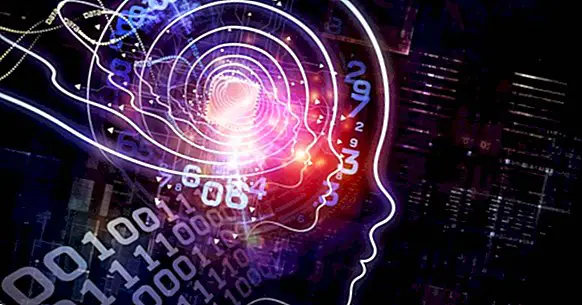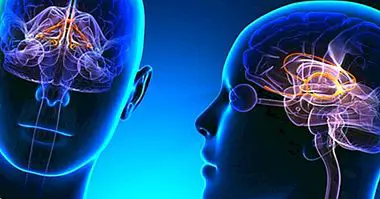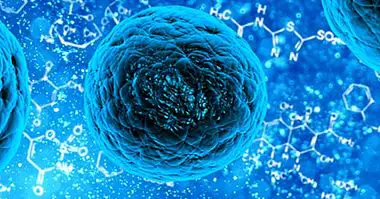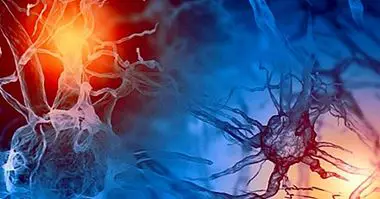Brain plasticity (or neuroplasticity): what is it?
Although all the brains seem almost equal, in reality they are very far from it. It is true that superficially all share a basic structure and a certain form, but if we examine them in detail we will see that they are all incredibly different; each of them contains neuronal circuits of very different shapes and distributions.
Furthermore, these differences are not explained by genes, that is, we are not born with them and we maintain them in a relatively stable way. In fact, these traits that make our brains something unrepeatable have to do with a fact that is true in all cases: each life is unique, and the experiences we experience make our brain physically change. This phenomenon is known as cerebral plasticity or neuroplasticity .
What is cerebral plasticity?
Neuroplasticity, also known as brain or neuronal plasticity, is the concept that refers to the way in which our nervous system changes from its interaction with the environment . Even in the case of monozygotic twins, this interaction is not identical, which means that each person perceives the world and acts on it in a different way, depending on the sequence of contexts that he or she has to live.
In addition, neuronal plasticity is not something that takes a long time to occur: it occurs constantly, in real time, and even while we sleep. We are constantly receiving a torrent of stimuli and we are emitting a constant flow of actions that modify the environment, and all these processes cause our brain to be modified.
To understand it in a simple way, we can think about what the term "plasticity" refers to. The brain, like plastic, can be adapted to practically any mold . However, in this comparison we must qualify two things. The first is that neuroplasticity depends on the intervention of an external intelligence that directs the process of modeling the metaphor towards a specific purpose (in the case of the example, the manufacturer of plastic figures or pieces), and the second is that, a Unlike the plastic, the structure and the shape of the components of our brain can change a lot constantly: not just in a "manufacturing phase".

How does brain plasticity occur?
Neuroplasticity is based on the way in which the neurons of our nervous system connect with each other. As discovered by the Spanish doctor Santiago Ramón y Cajal, the brain is not composed of a tangle of compacted cells that form a single structure, but are microscopic bodies with autonomy and physically separated from each other, sending information without get to join with each other in a definitive way. They are, in short, morphological individuals .
When a group of neurons are activated at the same time, they tend to send information to each other. If this pattern of activation is repeated with some frequency, these neurons not only send information, but tend to seek a more intense union with the others that are activated at the same time, becoming more predisposed to send information between them. This increase in the probability of activating together is physically expressed in the creation of more stable neuronal ramifications that unite these nerve cells and make them physically closer, which modifies the microstructure of the nervous system.
For example, if the neurons that are activated when we recognize the visual patterns of a chocolate tablet are "turned on" as well as those that are activated when we taste the sweet, both groups of nerve cells will connect a little more between Yes, which will make our brain change even a little.
The same goes for any other experience: although we do not notice it, we are constantly experiencing experiences (or, rather, small portions of experiences) that occur almost simultaneously and that make some neurons strengthen their bonds more and others weaken more his. This occurs both with sensations and with the evocation of memories and abstract ideas; The Halo Effect can be considered as an example of the latter.
An evolutionary advantage
Does this capacity of our nervous system have any purpose at the time of being molded by our experiences? Not really; It is a simple product of evolution that, for hundreds of millions of years, has been carving our brain and causing it to have certain properties.
Actually, brain plasticity is the opposite of a design created to achieve specific objectives, because instead of making our behavior something stereotypical and predictable, it makes it incredibly complex, connected with the multiple details of the context in which we live and dependent of our past experiences.That makes neuroplasticity have a negative side (the appearance of phobias, traumas, etc.) and another positive (our ability to learn from our experience and create complex and sophisticated ways of thinking, for example).
However, that the brain plasticity has no specific purpose does not mean that in the balance of the pros and cons, the former have outperformed the latter. The creation of broad and highly interconnected societies, our ability to invent artifacts and new technological advances and, of course, the ease when it comes to learning a language are phenomena that we have enjoyed thanks to brain plasticity and that explain much of the overwhelming evolutionary success that, for now, our species has had.
Brain plasticity makes our ability to adapt to changing situations very high , since we can deal with many of the new problems before which evolution has not had time to generate a mechanism of adaptation through natural selection. In the face of a natural catastrophe, for example, it is not necessary to wait until environmental pressures cause individuals to reproduce more than the rest, making thousands of years later the entire population has an appropriate genetic inheritance to deal with the problem: simply , the individuals of a few generations learn to create technological and social solutions that had never before been conceived.
The personal implications
Beyond this cold analysis based on the growth of the human population, which does not have to correspond with the personal value that we can attribute to neuroplasticity, we could also say that a good part of our ability to be happy depends on this characteristic of our central nervous system.
Without brain plasticity we could not create abstract ideas necessary to generate an autobiographical memory that allows us to be aware of ourselves, nor could we learn from our mistakes nor, in general, dispose of what we call "mental life". The brain plasticity is such a basic component of the normal functioning of our brain that without it we would be as close to an assembly-line robot as we could imagine.
At the same time, brain plasticity makes us very good at developing resilience, which is our ability to overcome very tough situations. For example, it is known that the perception of subjective well-being does not diminish significantly as we age away from the moment of our birth, which indicates that despite all the blows that life can give us, they do not "accumulate" or compromise our happiness chronically. This maintenance in the level of well-being takes place thanks to the capacity of our neurons at the time of reorganizing between them of the most convenient way, even when the age causes that many of them go disappearing.
In short, a neuroplasticity allows us to stay afloat despite the physical and emotional adversities. Although many times we tend to mythologize those aspects of the human mind that seem permanent, we must never forget that each one of us we are beings in constant change literally; and this also applies to our psyche.



















